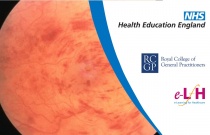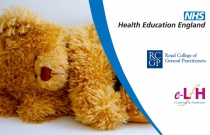The Management of Digit Sucking Habits
Anjli Patel
This session informs the healthcare worker how to deal with patients with digit sucking habits. This includes both thumb and finger sucking. The session will look at which patients require intervention to help them stop the habit and the various methods that can be employed.
Strong Ion Theory
Daniel Beckett
0.25 Hours
A brief overview of strong ion theory, particularly relating to metabolic acidosis.
The Patient with a Red Eye
Diana McEwen
0.50 Hours
This session provides core information about the assessment, differential diagnosis and management of a patient presenting in primary care with an acutely red eye. It covers how to identify potentially serious cases that need urgent referral.
The Limping Child
Iain Goff Sessional GP and Consultant Rheumatologist
0.50 Hours
This session considers the assessment, examination and treatment of limps in children. Red flag symptoms are described along with an overview of the consequences of a late diagnosis of conditions such as septic arthritis, Perthe's disease, slipped capital femoral ephiphysis and inflammatory arthritis.
The Patient with Sudden Loss of Vision
Stella Hornby - Module Editor: Eye Problems
0.50 Hours
This session contains core information about screening for and preventing eye diseases in the UK, both in children and adults. This session was reviewed by Sally Higginbottom and last updated in January 2015.
Screening and Prevention of Eye Disease
Stella Hornby - Module Editor: Eye Problems
0.25 Hours
This session contains core information about screening for and preventing eye diseases in the UK, both in children and adults. This session was reviewed by Sally Higginbottom and last updated in January 2015.
The Child With Aches and Pains Including Normal Variants
Helen Foster, Sharmila Jandial and Alwyn Abraham
0.50 Hours
This session describes approaches to the assessment and management of children presenting with non-specific musculoskeletal aches and pains. This session was reviewed by Louise Newson and last updated in October 2014.
Secondary Endocrine Causes Of Hypertension
Louise Newson - General Practitioner
0.50 Hours
This session gives an overview of the secondary causes of hypertension. It discusses some of the causes in more detail and gives recommendations on when to refer patients with hypertension to secondary care.
The Anaesthetist and the Theatre Team
Fiona Kelly
0.50 Hours
This session outlines the members of the anaesthesia team in an operating theatre, and describes their interactions with the teams involved in preoperative assessment, acute pain management and critical care. It explains the importance of working as a team, and describes the roles of each team member at each stage in the periope....
Talking Genetics: Communicating Genetic Information
Candy Cooley
0.50 Hours
This session considers the importance of communicating genetic information in a sensitive, non-judgemental way. It enables the GP to consider common misconceptions and the impact of genetic communication for the patient and family.
Sudden Infant Death Syndrome
Caroline Ghazawy
0.50 Hours
SIDS (Sudden Infant Death Syndrome) is a rare but devastating event for any family. This session covers the causes, risk factors and prevention of SIDS and also advice on how to respond after a death.
Communication and Human Factors
Claire Wroe and Maryke Woest
This session will outline how effective communication between healthcare colleagues is a key factor in protecting patients and prevention of errors. It has been developed by the three Critical Care Networks in London, and the Pan-London Critical Care Practice Development Group, working with CapitalNurse and e-Learning for Hea....
Self-evaluation: Axial and Appendicular Skeleton Anatomy (Adult) - Radiology
Dorothy Keane
A self-evaluation session designed to support you in assessing your knowledge of appendicular and axial skeleton anatomy.
Sexual Behaviour and Infection Risk
Fiona Burns, Cath Mercer and Soazig Clifton
0.50 Hours
This session will examine sexual practices and highlight the relative risks of sexually transmitted infection (STI) acquisition and unplanned pregnancy associated with sexual behaviours at a population level.
STIs in Prepubertal Children
Angela Robinson and Selena Singh
0.50 Hours
This session highlights specific issues related to the presentation, diagnosis and management of sexually transmitted infections (STIs) in pre-pubertal children. It also examines factors which place children at risk of STIs.
Sound Waves
John E FitzGerald
0.50 Hours
This session introduces the concept of what sound is, how it can be produced, how it travels through a medium and how it can be reflected or absorbed.
Surface Lesion of Bone
Suchi Gaba, Eugene McNally and Mark Davies
0.50 Hours
This session offers understanding about the surface lesions of the bone. It also highlights the interpretation features of tumours and tumour like juxtacortical lesions.
The Gastro-Oesophageal Junction, Hiatus Hernia and Reflux Disease
Philip Shorvon and Giles Stevenson
0.75 Hours
This session describes the anatomy, physiology and pathophysiology of the gastro-oesophageal junction (GOJ). The role of radiology in the diagnosis of a hiatus hernia and investigation of gastro-oesophageal reflux disease (GORD) is discussed.
What Is Virtual Colonoscopy?
David Burling and Emily Tam
0.75 Hours
This session is an introduction to virtual colonoscopy (VC) and covers the main indications for this investigation, the key techniques involved, interpretation methods and the diagnostic performance.
Ultrasound of the Solid Abdominal and Hollow Viscera
Catherine Gutteridge
This session covers the basics of abdominal ultrasound.
The Treated Breast
Peter Britton
0.50 Hours
This session covers the 'normal' imaging appearances following cancer treatment and the appearances of local recurrence.
Techniques: Ultrasound of the Testis
Grant Baxter
0.50 Hours
This session describes the ultrasonic investigation of the testes, how best to perform this and the normal appearances of the testicle.
Technique: Biopsy of the Kidney
James Pilcher
This session will outline the techniques of computed tomography (CT) and ultrasound-guided biopsy of both the native and transplant kidney. The indications, complications, and accuracy of the procedure will be covered.
The Patient as Partner in Evidence-based Practice
Kevork Hopayian
0.50 Hours
In this session, you will learn how to translate evidence from research to clinical practice, assessing the relevance of general findings to an individual, and communicating effectively to arrive at shared decisions.
Using Record Keeping to Promote Multi-agency Working
Rita Newland
0.50 Hours
This session will help you to identify the ways in which effective communication through record keeping will positively influence the delivery of the Healthy Child Programme.
























